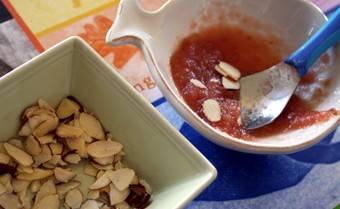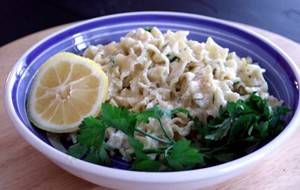
Come August, if you want a little of this action, it’s time to start planting (or at least planning.)
I could go on and on about the virtues of planting and harvesting your own food – it’s the ultimate way to go local. The food is a few feet and minutes away from your mouth or skillet, guaranteeing you health and freshness. And what an opportunity for your children! Not only does it show kids where food actually comes from, but they are a hundred times more likely to try a new veggie or fruit if they helped take care of it. Last summer, my one year old would pick tomatoes off the vine and eat them like apples – I was overjoyed!
Gardening can be as simple as a few containers on your balcony (just do a search for ‘container varieties’ of your favorite veggies), or more elaborate raised beds. I’m going all out this year, with a goal to grow and store much of the fruits and vegetables we typically eat.
Since we have a large garden space, I’m starting many items from seed in order to cut costs. If you only have a small space, transplants are much easier, but more expensive than starting your own vegetables (and you have more limited choices in varieties.)
To get started:
1) Think about how much time you have, and decide how many plants you would like to grow, and what varieties you would really like to eat.
2) Find a space: count on about 1 plant/sq foot (more for viney things or indeterminate tomatoes). If you can manage a simple raised bed, you will have more control over the soil and fewer weeds and issues. Most vegetables appreciate a lot of sun, and well-drained soil.
3) If you’re new to gardening, locate some good resources. A friendly, knowledgeable neighbor, your county extension office, or a good book (I like Rodale’s Garden Answers for Vegetables, Fruits, and Herbs).
4) Look up your last frost date, and get things planted soon after – with a little watering and weeding, you’ll be thrilled in a few short months!
I just planted carrots, spinach, broccoli, and several different types of lettuce in a cold frame from seed. I’ll sow a few more seeds of each variety every two weeks until it gets too warm. That way I’ll have a steady supply to enjoy.
I started some seeds last week, and plan to start a few more varieties at the end of this week. I’m attempting several different types of tomatoes, peppers (bell and chili), parsley, cilantro, basil, brussel sprouts, cucumbers, and watermelons. They are on a shelf in my basement, underneath a warm fluorescent light.
I’ll also be sowing a number of seeds directly into the garden, as they work better that way: green beans, shelling beans (dried), corn, musk melon, butternut squash, summer squash, and pumpkins.
Here are a few recipes to inspire you to have some fresh veggies and herbs at your fingertips!
America’s Test Kitchen’s fresh salsa: Sorry, you need to sign up for a free trial to view the amounts for this recipe, but it is simple and delicous. The basic technique is available though, so you can certainly wing the amounts.
The Pioneer Woman’s buttermilk ranch dressing and jalepeno appetizers. For the dressing, I usually substitute plain yogurt for half of the mayo, lemon juice for the vinegar, and just use whatever herbs I have on hand – it’s a forgiving recipe, but such a revelation that you can create such deliciousness. For the jalepeno, bacon-wrapped appetizers, I usually add in some sharp cheddar to the cream cheese. These little beauties are so simple, but a HUGE hit at a party (isn’t anything that is wrapped in bacon?)
Alton Brown’s Panzanella (Italian Bread Salad) recipe: feel free to add some cubed cheese and additional veggies, like cucumbers and peppers.
And don’t forget having the ingredients to make gazpacho, insalata caprese, or a fresh tomato pasta sauce just outside your backdoor.
I hope this post may inspire you to plant a few veggies this summer – if you have any questions on gardening techniques or vegetable varieties, please don’t hesitate to email me at [email protected]. My second secret fantasy (in addition to driving my own sophisticated ice pop truck) is to start a garden coaching business.
Happy Gardening!











